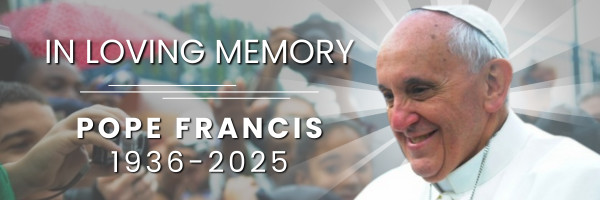We ask you, urgently: don't scroll past this
Dear readers, Catholic Online was de-platformed by Shopify for our pro-life beliefs. They shut down our Catholic Online, Catholic Online School, Prayer Candles, and Catholic Online Learning Resources essential faith tools serving over 1.4 million students and millions of families worldwide. Our founders, now in their 70's, just gave their entire life savings to protect this mission. But fewer than 2% of readers donate. If everyone gave just $5, the cost of a coffee, we could rebuild stronger and keep Catholic education free for all. Stand with us in faith. Thank you.Help Now >
Canterbury
FREE Catholic Classes
(CANTUARIA—Roman name, DUROVERNUM, whence, in Anglo-Saxon times, DUROVERNIA; canonical name CANTUARIENSIS).
The Ancient Diocese of Canterbury was the Mother-Church and Primatial See of All England , from 597 till the death of the last Catholic Archbishop, Cardinal Pole, in 1558.
FOUNDATION OF THE SEE
When St. Augustine was sent to evangelize England by St. Gregory the Great , he found an opening for his labours in the fact that Æthelburga, or Bertha, Queen of Æthelberht, King of Kent, was a Christian and a disciple of St. Gregory of Tours. This led him to Canterbury, where he converted the king and many thousands of Saxons in 597, the very year of his landing. Though St. Gregory had planned the division of England into two archbishoprics, one at London and one at York, St. Augustine's success at Canterbury explains how the southern archiepiscopal see came to be fixed there instead of at London. The first beginnings of the diocese are told by St. Bede (Hist. Eccl., I, xxxiii). "When Augustine, the first Archbishop of Canterbury, assumed the episcopal throne in that royal city, he recovered therein, by the King's assistance, a church which, as he was told, had been constructed by the original labour of Roman believers. This church he consecrated in the name of the Saviour, our God and Lord Jesus Christ, and there he established an habitation for himself and all his successors".
THE ARCHBISHOPS
There were in all sixty-eight archbishops during the period, just short of a thousand years, in which Canterbury was the chief Catholic see in England. In the following list the dates of some of the earlier prelates cannot be regarded as critically certain, but are those usually given. Those marked with an asterisk became cardinals.
Of this list seventeen archbishops were recognized as saints, nine were cardinals, and twelve became Lord Chancellors of England. The full title of the archbishop was Primate of all England, Metropolitan of the Province, and Diocesan of the Diocese. In documents he was described as Archbishop providentia divina , instead of permissione divina , as was usual with other bishops.
METROPOLITAN RIGHTS
The organization of the province was, of course, a matter of gradual growth, and therefore the number and the names of the suffragan sees in the earlier periods vary very much, as does the extent of the metropolitan jurisdiction. At the height of its power Canterbury counted seventeen suffragan sees : Bangor, Bath and Wells, Chichester, Coventry and Lichfield, Ely, Exeter, Hereford, Llandaff, Lincoln, London, Norwich, Rochester, St. Asaph, St. David's, Salisbury, Winchester, and Worcester. To these were added five of the six sees founded under Henry VIII in 1541 and afterwards recognized by the Holy See under Mary (1553-1558), viz., Bristol, Gloucester, Oxford, Peterborough, and Westminster. Several of these bishops acted on state occasions as the curia of the archbishop. Thus the Bishop of London acted as his dean ; Winchester was his chancellor; Lincoln his vice-chancellor; Salisbury his precentor ; Worcester his chaplain ; and Rochestor his cross-bearer. Even the Archbishop of York was not exempt from his jurisdiction, and these metropolitan rights also extended to Irish bishops (see Wharton, "Anglia Sacra", for instances) and to the clergy of Normandy, Gascony, and Aquitaine, as long as these provinces formed part of the English dominions. The archbishop enjoyed perpetual legatine power, being Apostolicae Sedis legatus natus , and in councils abroad he took precedence of other archbishops, having the right to a special place "at the Pope's right foot". In England he was the ordinary of the royal court, wherever held, and the king and queen were regarded as his parishioners. He had the right of crowning and anointing the sovereign, a privilege confirmed by a Bull of Alexander III. He was the first peer of the realm, with precedence over all dukes not of the blood royal. He had the right of confirming the election of all suffragan bishops, and of consecrating them, and in the case of Rochester he enjoyed the patronage of the see, having the nomination of the bishop and the right to the temporalities during all vacancies. He also possessed many churches and parishes in the dioceses of London, Winchester, Norwich, Lincoln, Chichester, and Rochester. There were over eighty such benefices, all of which were exempt from the jurisdiction of their proper bishops and subject to him. The archbishop alone had the right of summoning a provincial synod.
THE DIOCESE
The diocese itself was not of great extent, consisting only of part of the County of Kent. There were 257 parishes, and only one archdeaconry for the whole diocese. The archbishop's palace was at Canterbury on the west side of the cathedral. The archbishop owned more than twenty manors in Kent alone, including the castle of Saltwood. The London residence, in later times, was at the Manor of Lambeth, while Otford was the most favoured country seat.
THE CATHEDRAL
The consecration by St. Augustine of an existing Roman basilica has been described in the words of the Ven. Bede. This building, with additions and alterations, continued until 1067, when, with the adjacent monastery, it was destroyed by fire. In 1070 Lanfranc began to rebuild it on a considerable scale, but no trace of his work remains visible. But the present nave and western towers still rest on his foundations, and in fact the existing cathedral covers as nearly as possible the same ground, with the addition of the retro-choir. Parts of the crypt and some of the monastery ruins also belong to his period. A new choir, afterwards known as the "glorious choir of Conrad", was begun in 1096, finished in 1130, and burnt in 1174, though two chapels and part of the crypt survive. The present choir, begun by William of Sens and continued by William the Englishman, was finished in 1184, and is the earliest specimen of Transitional architecture, as well as being the longest choir in England (180 feet). In 1378 Lanfranc's nave was pulled down, and the present nave was begun by Prior Chillendon. At the same date the chapter house and the cloisters were finished. Finally the cathedral was completed, about 1495, by the erection of the great central tower 235 feet high. The total length of the cathedral is 522 feet, the breadth of the nave and aisles 71 feet. The building illustrates in itself almost all the varieties of Gothic, though Early English and Perpendicular predominate.
HISTORY OF THE SEE
Before England had acquired national unity, the foundation of the see had given it ecclesiastical unity. Older than any national institution, its history is inseparably bound up with that of the country, and the barest outline exceeds our space. The formation of the dicese was monastic, taking its rise from the Monastery of Christ Church, and the ecclesiastical organization grew by means of the great religious houses at Dover, Lyminge, Folkestone, Minster in Sheppy, Minster in Thanet, Reculver, and the great rival monastery in Canterbury of Sts. Peter and Paul, afterwards St. Augustine's. Throughout the subsequent history the archbishops could not deal with archiepiscopal property without the concurrence of the monastic chapter, and the efforts of the archbishops to rid themselves of the control of the Canterbury monks gave rise to the frequent disputes between prelate and chapter that recur throughout the history of the diocese. From these foundations as centres the parochial system gradually spread. Another characteristic was the purely Roman character of the Church in Kent. It was free from all such conflicts with Celtic Christianity as took place in the North, and in liturgy it never developed a local use, but followed the Roman Rite that St. Augustine had introduced. The first five archbishops were all Romans, St. Deusdedit being the first Englishman to rule the see. He was succeeded by St. Theodore, a Greek, one of the greatest of the archbishops, who travelled throughout England, and organized the primatial power and metropolitan jurisdiction. He was followed by a line of monastic prelates, chiefly local administrators. Under one of these, Jaernbehrt (766-790), during the supremacy of Mercia, the very primacy was threatened by the establishment of an Archbishopric of Lichfield, but this did not last. After Alfred's time came several archbishops translated from other sees, and bringing wider knowledge, so that the see grew in authority until it rose to its height during the episcopate of St. Dunstan , whose genius marked an epoch in diocesan, as in national, history. Under him the influence of Canterbury was felt throughout the land. While relying chiefly on the work of the greater monasteries, he also encouraged the secular clergy, whose parochial settlements always followed the missionary work begun from the houses of the regulars. St. Ælphege, murdered by the Danes in 1012, added the glory of martyrdom to the chair of Canterbury. The last of the Saxon prelates was Stigand, regarded as uncanonical because he had received his pallium from an antipope, and he was finally dispossessed by William the Conqueror in 1070. Until this time there had been a sort of auxiliary bishop, or choriepiscopus, with the title " Bishop of St. Martin's", who held the church of that name at Canterbury, and whenever the bishop was absent filled his place. The last of these prelates was Godwin, who died in 1065. The new archbishop, Lanfranc, refused to continue the arrangement. Lanfranc introduced the prebendal system at Canterbury, and reorganized the arrangement of property, dividing off that of the archbishop from that of the monastery, with the result that from that time the close bond that had previously existed between them disappeared. Thenceforth, too, the Archbishops of Canterbury became absorbed in the wider duties of primate, as is seen in the episcopate of St. Anselm, who contested with the king the rights of the Church involved in the question of investitures.
The widened sphere of archiepiscopal activity was signalized when the pope appointed Theobald (1139-1161) as legatus natus . He was succeeded by St. Thomas of Canterbury, whose long struggle was crowned by martyrdom in 1170. Henceforth Canterbury, as the place of his shrine, entered on new glories, becoming famous through all Christendom for the miracles wrought at the tomb, the devotion of the pilgrims, and the splendour of the shring. The next archbishop, Richard, had to maintain the primacy of Canterbury against the claims of York, the question being finally compromised by the pope, who gave York the title " Primate of England " and Canterbury that of " Primate of All England ". Succeeding archbishops played prominent parts as statesmen, notably Hubert Walter and Stephen Langton, the latter taking the leading part in obtaining Magna Charta from King John. Endless disputes with the monks and fruitless struggles against papal exactions and royal abuses marked the short and unhappy episcopate of St. Edmund of Canterbury (1234-1240), the last of the canonized archbishops. From his time to the Reformation the archbishops were men distinguished in many ways, under whom the privileges and power of the diocese were constantly increased. The tradition was not reversed till the time of Cranmer, who, like his predecessors, received his pallium from the pope, but considered that he held the archbishopric from the king. Having broken his own vow of celibacy, he easily divorced the king from Queen Catherine. He allowed the shrine of St. Thomas to be desecrated and plundered in 1538, and in 1541 he ordered the tombs of all the canonized archbishops to be destroyed. Most of the property of the see he was forced to surrender to the king. In 1539 the two great monasteries of Christ Church and St. Augustine's had been suppressed, and their property seized. By his office Cranmer was the head of the Church in England, but under Henry he helped to despoil it, and under Edward he led the reforming party against it, abolishing the Mass, and stripping the churches. The spiritual and material ruin thus accomplished could not be effectually remedied during the brief episcopate of Cardinal Pole (1556-1558). This prelate did all that was possible in so short a time, but his death, which took place on the 17th of November, 1558, brought to a close the line of Catholic archbishops. With the accession of Elizabeth—which took place on the same day—the new state of things, which has continued to the present time, was begun. Canterbury, as a city, has never recovered from the loss of St. Thomas's shrine and the destruction of the two great monasteries, but the cathedral still remains, one of the finest buildings in the country, as a witness to its former glory.
The arms of the see were: Sapphire, an episcopal staff in pale, Topaz, and ensigned with a cross patee Pearl, surmounted of a pall of the last, charged with four crosses, formee, fitchee, Diamond, edged and fringed as the second.
Join the Movement
When you sign up below, you don't just join an email list - you're joining an entire movement for Free world class Catholic education.

Novena for Pope Francis | FREE PDF Download
-

- Easter / Lent
- Ascension Day
- 7 Morning Prayers
- Mysteries of the Rosary
- Litany of the Bl. Virgin Mary
- Popular Saints
- Popular Prayers
- Female Saints
- Saint Feast Days by Month
- Stations of the Cross
- St. Francis of Assisi
- St. Michael the Archangel
- The Apostles' Creed
- Unfailing Prayer to St. Anthony
- Pray the Rosary
Cardinals Request Prayers from Faithful Ahead of Historic May 7 Conclave
How a New Pope Is Elected
Toy Shortages Threaten Christmas Traditions as Trade War Impacts Retailers
Daily Catholic
 Daily Readings for Thursday, May 01, 2025
Daily Readings for Thursday, May 01, 2025 St. Marculf: Saint of the Day for Thursday, May 01, 2025
St. Marculf: Saint of the Day for Thursday, May 01, 2025 To Saint Peregrine: Prayer of the Day for Thursday, May 01, 2025
To Saint Peregrine: Prayer of the Day for Thursday, May 01, 2025 Daily Readings for Wednesday, April 30, 2025
Daily Readings for Wednesday, April 30, 2025 St. Pius V, Pope: Saint of the Day for Wednesday, April 30, 2025
St. Pius V, Pope: Saint of the Day for Wednesday, April 30, 2025- Prayer to Saint Joseph for Success in Work: Prayer of the Day for Wednesday, April 30, 2025
![]()
Copyright 2025 Catholic Online. All materials contained on this site, whether written, audible or visual are the exclusive property of Catholic Online and are protected under U.S. and International copyright laws, © Copyright 2025 Catholic Online. Any unauthorized use, without prior written consent of Catholic Online is strictly forbidden and prohibited.
Catholic Online is a Project of Your Catholic Voice Foundation, a Not-for-Profit Corporation. Your Catholic Voice Foundation has been granted a recognition of tax exemption under Section 501(c)(3) of the Internal Revenue Code. Federal Tax Identification Number: 81-0596847. Your gift is tax-deductible as allowed by law.





 Daily Readings for Thursday, May 01, 2025
Daily Readings for Thursday, May 01, 2025 St. Marculf: Saint of the Day for Thursday, May 01, 2025
St. Marculf: Saint of the Day for Thursday, May 01, 2025 To Saint Peregrine: Prayer of the Day for Thursday, May 01, 2025
To Saint Peregrine: Prayer of the Day for Thursday, May 01, 2025 St. Pius V, Pope: Saint of the Day for Wednesday, April 30, 2025
St. Pius V, Pope: Saint of the Day for Wednesday, April 30, 2025

